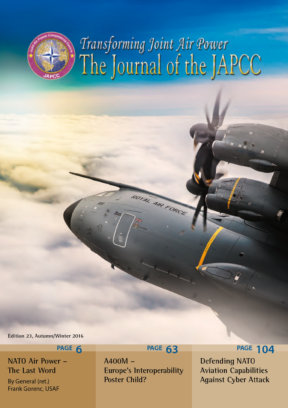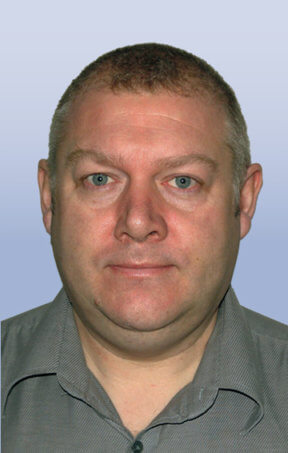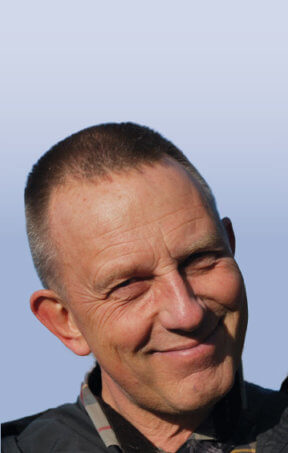Introduction
Swedish Tactical Aerial Reconnaissance (TAR) has, like other parts of Swedish Armed Forces’ (SwAF) capability, followed shifts of emphasis in doctrine and practice. In particular, at the end of the Cold War, it moved from a posture focusing on fending off a Warsaw Pact invasion towards greater emphasis on deployed interventions abroad. More recently, contemporary events have also impacted on Swedish thinking, resulting in a renewed focus on homeland defence whilst also recognising the need to act in concert with others. Consequently, interoperability issues will increasingly play a prominent role in Sweden’s wider international approach. Indeed, interoperability is high on the current agenda due to both the recently ratified Host Nation Agreement between Sweden and NATO and Sweden’s on-going commitment to the NATO Response Force (NRF). Against this shifting backdrop, this article provides a broad outline of both past and present TAR capabilities before considering likely future development, with particular emphasis on interoperability.
History of Swedish TAR
From the ’60s through to the ’80s, SwAF intelligence requirements placed a strong emphasis on countering an invasion threat.1 Accordingly, the need to follow regional developments, for example in and around the Baltic seaports, largely governed SwAF TAR2 capability development. Sweden’s main international effort during this period was in the Belgian Congo, where an air presence was deployed, using the reconnaissance version of the iconic SAAB 29 (The Flying Barrel).3
Although the invasion threat remained the defining consideration, by the ’90s there was also an increasing focus on international operations, mainly driven by events and subsequent SwAF deployments in the Balkans. Whilst no SwAF TAR units were deployed in this theatre, UK Remotely Piloted Aircraft (RPA) assets were used by Swedish troops, generating valuable tasking and user experience.4 At that time, SwAF RPA capabilities were still under development, mainly within K3, an army regiment in southern Sweden.
In response to this growing emphasis on deployed operations, the Swedish Air Force Rapid Reaction Unit (SWAFRAP) formed in 2000. At first, SWAFRAP’s tasks – mainly reconnaissance – were designated to the reconnaissance version of the SAAB AJSF 37 Viggen. The SWAFRAP was, however, never deployed.5
Over the next decade, SWAFRAP was re-equipped and replaced by a series of similar, small and agile units equipped for fighter and attack roles as well as for reconnaissance. This included assignments of the unit within the EU Nordic Battle Group Expeditionary Air Wing (NBG EAW). Deployment for a mission abroad did not, however, take place until 2011. Similarly to its assignment to the NBG EAW, since 2014, Sweden has also offered Gripen TAR assets to support the NRF.6
In 2011, there were also advances in RPA when Swedish elements deployed to Afghanistan were equipped with the Shadow 200. During this deployment, it became increasingly apparent that organic tactical reconnaissance support was a modern day battlespace necessity. Somewhat later, smaller tactical RPA were also again tested and acquired.
The early part of this century offered few real-world opportunities to test the emerging aircraft TAR capability, but that changed in April 2011, when Sweden deployed a Gripen unit (equipped with eight aircraft) to participate in the NATO-led Operation Unified Protector (OUP) over Libya. Notwithstanding the organisational preparation that had taken place over the years, this was the first Swedish expeditionary experience with combat aircraft since the Congo deployment half a century earlier.
Since Libya, the Gripen contingency commitment to the EU NBG EAW7 has been sustained, although the unit has not deployed. Sweden, however, is currently contributing some 250 troops to the ISR Task Force (equipped with Shadow 200 and smaller tactical RPA) as well as to the Multinational All Sources Information Fusion Unit, in Mali.8
Organisationally, SwAF TAR has continued to revolve around three formations; F17, F21 (both Air Force wings) and K3 (Army regiment). F17 and F21 each comprise two squadrons, all of which undertook TAR. However, in early 2016 the fixed wing TAR role was allocated solely to F17. At K3, TAR is organized within the regiment’s Intelligence Battalion, which among other capabilities comprises two Shadow 200-equipped companies. Furthermore, each of the eight Swedish ground forces battalions is equipped with organic RPA assets.9
SwAF TAR in OUP
The Swedish Libyan mission was divided into two rotations. First, from April to June 2011, the unit was tasked to provide Defensive Counter Air (DCA) and TAR in support of the No Fly Zone (NFZ). Notably, the ratio of pure DCA to mixed DCA/TAR was 1:11; however, most of the latter was purely reconnaissance.10 The second rotation, from June to October 2011, expanded the mission to cover TAR across the full spectrum of UN-mandated tasks – going well beyond those related to the NFZ by including the enforcement of the arms embargo and, most importantly, the protection of civilians. In total, the Swedish operation contributed over 570 missions and about 1,770 flight hours; from a TAR perspective, around 2,770 reconnaissance exploitation reports (RECCEXREPs) were sent to higher command. In fact, during the second rotation, Gripens conducted a third of all OUP TAR assignments.
From these statistics, it is clear that Sweden’s predominant contribution – beyond that of political support to the operation – was TAR. It is fair to say that initially Sweden’s involvement was probably seen as politically useful, but it did not carry particularly high expectations of operational utility. Such scepticism quickly transformed into praise after the reconnaissance missions and imagery provided by the Swedish contingent consistently proved their worth. A RUSI report on the international intervention in Libya concluded:11
OUP Lessons Learned on Interoperability
Whilst the Swedish contribution to OUP was in many ways a success, the operation also revealed a number of important challenges, which would need to be addressed to improve operational effectiveness in future coalitions. Upon deployment, it became clear that the Swedish communication systems, despite years of working on interoperability, could not be fully integrated into the NATO C2 systems. First, and most importantly, as a partnership country, Sweden had no access to the NATO Secret network from the outset, and obtaining a license initially proved difficult. Second, despite having made the Gripen’s Link 16 compatible shortly before deploying, a crypto key had to be obtained, which also was a difficult and lengthy process. Not providing early access to a substantial troop contributor was an unnecessary weakness, and the Alliance has been critical of its handling of this issue.12 In short, these matters highlighted the importance of interoperability – both politically and technically, particularly when they impact on speed of information transfer and analysis – the key in TAR to operational effectiveness.
Interoperability with NATO Joint ISR today
The primary NATO initiative driving Sweden’s focus on TAR has been Joint Intelligence Surveillance and Reconnaissance (JISR).13 Essentially, this initiative shifts the focus from collecting intelligence to streamlining the collection process and ensuring subsequent products are stored and shared in a timely and efficient manner with minimal obstacles between the command chain and contributing/user forces. In many ways, it is dependent on building a network of Coalition Shared Data (CSD) servers which allow unhindered and timely transfer of products generated by those on the network, as well as the potential to transparently tap into the collection management process. As this initiative gains traction (the underpinning doctrine, AJP 2.7 JISR, was published on 11 July 2016), nations will need to decide the measures necessary to ensure adequate interoperability both in terms of process and CSD capability. Given that this process will most likely form the basis of any coalition activities, potential partners, like Sweden, will also need to make suitable contingency arrangements to avoid interoperability speed bumps on contributing elements.
The Swedish government has explicitly directed its military to maintain interoperability with NATO and actively transform towards NATO compliance. Although Sweden has no formal STANAG ratification process, many relevant standards (both procedural and technical) have been implemented. In particular, with regard to TAR capabilities, the Swedish Armed Forces will continue to comply with the requirements of STANAGs 3377 and 359614 for reporting methodology and RECCEXREP. However, when it comes to other JISR standards, Sweden, having not been part of the Multi-Intelligence All-source Joint ISR Interoperability Coalition (MAJIIC) community15, and with some of the MAJIIC technology work patterns not yet published as STANAGS, is understandably lacking some JISR-specific solutions. Nevertheless, Sweden is following the current NATO JISR initiatives closely, and has decided to become a NATO FMN (Federated Mission Networking) participant.
The Coalition Shared Data Challenge for Swedish TAR
Sweden bases its interoperability requirements on NATO’s Partnership for Peace Planning & Review Process goals and the Allied Command Operation Directive 80-096 on the NATO Response Force (NRF). Neither document currently includes any specific JISR technology guidance, for example on CSD servers. Consequently, CSD interoperability has no priority on the current SwAF agenda. However, the need to share and collaborate in this manner is well understood and accepted, leading to increased discussion regarding CSD issues. Nevertheless, the lack of formal guidance has to date stymied any CSD initiatives by the Swedish Defence Materiel Administration on behalf of the SwAF.
In recent years, there have only been minor changes to equipment. Consequently, Gripen’s reconnaissance pod lacks a downlink capability, meaning data is only available to interpreters for exploitation post-landing. However, a software solution is in place allowing the image interpreter to almost immediately start producing the RECCEXREP, while the entire mission data set is still being downloaded. Nevertheless, a CSD solution for sharing raw or exploited data is currently neither available aboard Swedish reconnaissance aircraft nor at the respective ground stations.
So, if the SwAF were to embrace NATO JISR, particularly CSD, how could that be done? As a start, it is possible to rapidly create a solution for archiving, cataloguing, and retrieval with CSD interoperability simply by deploying a CSD server alongside a Gripen unit. The Gripen unit could then publish data to the CSD server via an air gap. From this ‘outside’ CSD server, data can be published to a Mission Network via Swedish BICES16. With some advice from the NATO Communication and Information Agency (NCIA), both short-term plans to integrate Gripen with CSD, and longer-term solutions, are currently under discussion within the SwAF.
In the same manner, demands for video archiving, cataloguing and retrieval with CSD interoperability are beginning to be felt within the SwAF Tactical RPA community. The latest development of NATO JISR doctrine and procedures clearly point to the need for common methods and messages in regards to JISR operations; moreover, the requirement to make RPA video available to partners is a distinct challenge. However, there are at present no plans to CSD-ify SwAF Tactical RPA.
Conclusion
Operationally, interoperability issues could be quite significant going forward. Could SwAF TAR today offer the same utility as it did in OUP? The current inability to provide a CSD-driven approach would most certainly impact on its utility in time-sensitive terms. In today’s more sensor-rich environment, the chief effect of this would be that Swedish intelligence products, not being available via CSD, would take longer to access than products available from CSD-capable nations. Because of this, it is assessed that, should something akin to OUP happen today, Swedish assets would be used less, and would be given lower priority tasks with less important time constraints. Notably, the lack of CSD architecture also means that SwAF units cannot access the vast archives of imagery that would most likely be generated, or receive time-sensitive data from other coalition assets, to the detriment of their own effectiveness.
TAR will inevitably play a prominent part in Swedish defence planning, which perhaps is natural for a small, non-aligned nation with limited resources and a strong focus on homeland defence. This TAR emphasis has been strengthened by the recent good use made of such capabilities in international missions such as Libya and Mali. It would therefore be surprising if SwAF TAR resources were to be further diminished, despite current economic strains. That said, just like the rapid rise of RPA at the turn of the century became a necessity, interoperability and sharing will likely make similar demands on any nation, in or out of NATO, wishing to contribute to collective missions downstream. So, given that the NATO JISR initiative, particularly its sharing philosophy based on exploiting CSD, could well become the operational norm, the timely codifying of what an alliance/coalition contributor needs to achieve in terms of interoperability would be a significant step forward, if not an essential precursor, to successful operations.















